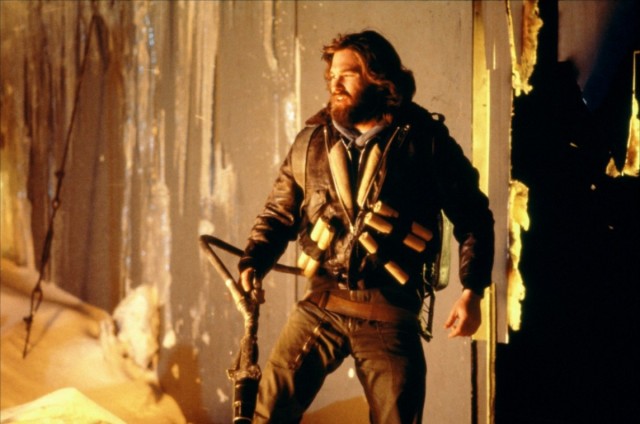
Charlie Chaplin looks back on his life and career in the melancholic classic LIMELIGHT
LIMELIGHT (Charles Chaplin, 1952)
Rubin Museum of Art
150 West 17th St. at Seventh Ave.
Friday, February 19, $10, 9:30
Series continues Friday nights through February 26
212-620-5000
rubinmuseum.org
 “You will feel closer to Charlie the man, seeing this film, than in any of the other films where he plays a character, magnificently, but this is different. This is him,” Claire Bloom said before a sixtieth anniversary screening of Charlie Chaplin’s Limelight. In what was intended to be his farewell film, Chaplin bids adieu to his Little Tramp character and laments the end of an era in this deeply personal work, which features five of his children, his brother, his half-brother, and silent film comedians Snub Pollard and Buster Keaton. Though made in Hollywood in 1951, Limelight is set in Chaplin’s native London in 1914, the year he began his movie career at Keystone Studios. Chaplin is Calvero, a former vaudeville-style music hall star — modeled on himself as well as comedian Frank Tinney, Spanish clown Marceline, and his father — who is now a down-on-his-luck forgotten drunk. He comes home one day, smells gas, and breaks down the door of a neighbor’s apartment, saving a beautiful young ballerina, Thereza “Terry” Ambrose (Claire Bloom), from suicide. As the kind and gentle Calvero nurses her back to health, determined that she resume her career (in a way, as a surrogate for his current failures), Terry falls in love with him. Calvero tells her that it is not a real, romantic love; the character is partially based on Chaplin’s mother, whom he cared for while she suffered from mental illness, although there are obvious age parallels to his real-life wife, Oona O’Neill, whom he married in 1943 when he was fifty-four and she was eighteen. (Chaplin was sixty-three when Limelight was released, Bloom twenty-one.) But Terry insists her love is genuine and true, and soon they are both restarting their careers, with very different results.
“You will feel closer to Charlie the man, seeing this film, than in any of the other films where he plays a character, magnificently, but this is different. This is him,” Claire Bloom said before a sixtieth anniversary screening of Charlie Chaplin’s Limelight. In what was intended to be his farewell film, Chaplin bids adieu to his Little Tramp character and laments the end of an era in this deeply personal work, which features five of his children, his brother, his half-brother, and silent film comedians Snub Pollard and Buster Keaton. Though made in Hollywood in 1951, Limelight is set in Chaplin’s native London in 1914, the year he began his movie career at Keystone Studios. Chaplin is Calvero, a former vaudeville-style music hall star — modeled on himself as well as comedian Frank Tinney, Spanish clown Marceline, and his father — who is now a down-on-his-luck forgotten drunk. He comes home one day, smells gas, and breaks down the door of a neighbor’s apartment, saving a beautiful young ballerina, Thereza “Terry” Ambrose (Claire Bloom), from suicide. As the kind and gentle Calvero nurses her back to health, determined that she resume her career (in a way, as a surrogate for his current failures), Terry falls in love with him. Calvero tells her that it is not a real, romantic love; the character is partially based on Chaplin’s mother, whom he cared for while she suffered from mental illness, although there are obvious age parallels to his real-life wife, Oona O’Neill, whom he married in 1943 when he was fifty-four and she was eighteen. (Chaplin was sixty-three when Limelight was released, Bloom twenty-one.) But Terry insists her love is genuine and true, and soon they are both restarting their careers, with very different results.
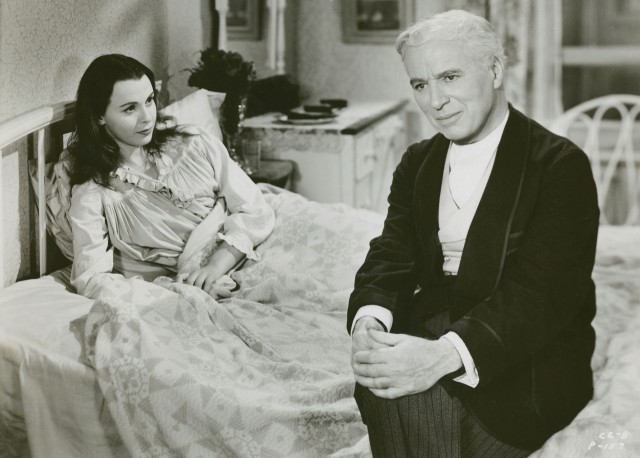
Calvero (Charles Chaplin) cares for suicidal ballerina Terry (Claire Bloom) in LIMELIGHT
Aptly called “a sublime exorcism” by Bernardo Bertolucci, Limelight is overly long, too melodramatic, frustratingly repetitive, and often absurdly sentimental, but it’s impossible not to become engrossed in its touching magic, especially when considering its autobiographical nature. At the time, Chaplin, whose previously film was 1947’s much-maligned Monsieur Verdoux, was being investigated by the U.S. government for suspected communist ties and questionable morality; when he went overseas for Limelight’s British premiere, he was barred from returning to America, and he would not come back to the States until 1972, when he was awarded an honorary Oscar; even then, he was allowed only a temporary stay. Chaplin, who wrote, directed, produced, and choreographed the film and composed the score, fills Limelight with emotional statements that range from philosophical and psychological to quaint and treacly, though relevant to both the fictional Calvero and the real-life comedian. Cinematographer Karl Struss (The Great Dictator, Some Like It Hot) regularly zeroes in on Calvero’s often pitiable face, eyes occasionally turned directly into the camera and at the viewer; the sadness Chaplin expresses particularly when removing stage makeup is heartbreaking. “I believe I’m dying, Doctor,” he says at one point. “Then, I don’t know. I’ve died so many times.” The melancholic film, which intelligently deals with art and aging in changing times, also stars Nigel Bruce, best known as Watson to Basil Rathbone’s Sherlock Holmes, as the ballet company owner, Norman Lloyd as the company manager, Marjorie Bennett as Calvero’s landlady, Canadian ballerina Melissa Hayden as Terry’s dance double, and André Eglevsky as the male ballet dancer. The sketch performed by Chaplin and Keaton, the only time they worked together on film, is, of course, a gem, as painful as it is funny. Perhaps the most telling line is when Terry says to composer and pianist Neville (Sydney Earl Chaplin, Charlie’s brother), “What is more eloquent than silence?” Chaplin would go on to make only two more pictures, 1957’s A King in New York and 1967’s A Countess from Hong Kong, his only film in which he didn’t have a major role. He died on Christmas Day in 1977, at the age of eighty-eight, still married to Oona. Limelight is screening February 19 as part of the Rubin Museum Cabaret Cinema series “Steve McCurry Selects,” held in conjunction with the photo exhibition “Steve McCurry: India,” and will be introduced by Teva Bjerken. The series concludes February 26 with Orson Welles’s Touch of Evil, introduced by journalist Phil Zabriskie.

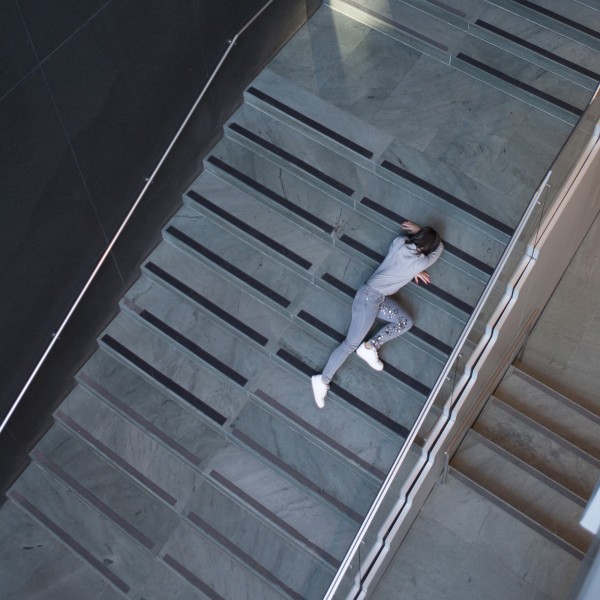

 “You will feel closer to Charlie the man, seeing this film, than in any of the other films where he plays a character, magnificently, but this is different. This is him,” Claire Bloom said before a sixtieth anniversary screening of Charlie Chaplin’s Limelight. In what was intended to be his farewell film, Chaplin bids adieu to his Little Tramp character and laments the end of an era in this deeply personal work, which features five of his children, his brother, his half-brother, and silent film comedians Snub Pollard and Buster Keaton. Though made in Hollywood in 1951, Limelight is set in Chaplin’s native London in 1914, the year he began his movie career at Keystone Studios. Chaplin is Calvero, a former vaudeville-style music hall star — modeled on himself as well as comedian Frank Tinney, Spanish clown Marceline, and his father — who is now a down-on-his-luck forgotten drunk. He comes home one day, smells gas, and breaks down the door of a neighbor’s apartment, saving a beautiful young ballerina, Thereza “Terry” Ambrose (Claire Bloom), from suicide. As the kind and gentle Calvero nurses her back to health, determined that she resume her career (in a way, as a surrogate for his current failures), Terry falls in love with him. Calvero tells her that it is not a real, romantic love; the character is partially based on Chaplin’s mother, whom he cared for while she suffered from mental illness, although there are obvious age parallels to his real-life wife, Oona O’Neill, whom he married in 1943 when he was fifty-four and she was eighteen. (Chaplin was sixty-three when Limelight was released, Bloom twenty-one.) But Terry insists her love is genuine and true, and soon they are both restarting their careers, with very different results.
“You will feel closer to Charlie the man, seeing this film, than in any of the other films where he plays a character, magnificently, but this is different. This is him,” Claire Bloom said before a sixtieth anniversary screening of Charlie Chaplin’s Limelight. In what was intended to be his farewell film, Chaplin bids adieu to his Little Tramp character and laments the end of an era in this deeply personal work, which features five of his children, his brother, his half-brother, and silent film comedians Snub Pollard and Buster Keaton. Though made in Hollywood in 1951, Limelight is set in Chaplin’s native London in 1914, the year he began his movie career at Keystone Studios. Chaplin is Calvero, a former vaudeville-style music hall star — modeled on himself as well as comedian Frank Tinney, Spanish clown Marceline, and his father — who is now a down-on-his-luck forgotten drunk. He comes home one day, smells gas, and breaks down the door of a neighbor’s apartment, saving a beautiful young ballerina, Thereza “Terry” Ambrose (Claire Bloom), from suicide. As the kind and gentle Calvero nurses her back to health, determined that she resume her career (in a way, as a surrogate for his current failures), Terry falls in love with him. Calvero tells her that it is not a real, romantic love; the character is partially based on Chaplin’s mother, whom he cared for while she suffered from mental illness, although there are obvious age parallels to his real-life wife, Oona O’Neill, whom he married in 1943 when he was fifty-four and she was eighteen. (Chaplin was sixty-three when Limelight was released, Bloom twenty-one.) But Terry insists her love is genuine and true, and soon they are both restarting their careers, with very different results.


 Colombian writer-director Ciro Guerra takes viewers on a spectacular journey through time and space and deep into the heart of darkness in the extraordinary Embrace of the Serpent. Guerra’s Oscar-nominated film, the first to be shot in the Colombian Amazon in thirty years, opens with a 1909 quote from explorer Theodor Koch-Grünberg: “It is not possible for me to know if the infinite jungle has started on me the process that has taken many others to complete and irremediable insanity.” Inspired by the real-life journals of Koch-Grünberg and botanist and explorer Richard Evans Schultes, Guerra poetically shifts back and forth between two similar trips down the Vaupés River, both led by the same Amazonian shaman, each time guiding a white scientist on a perilous expedition in a long, narrow canoe. Shortly after the turn of the twentieth century, ailing white ethnologist Theo (Jan Bijvoet) and his native aid, Manduca (Yauenkü Migue), seek the help of Karamakate (Nilbio Torres), a shaman wholly suspicious of whites and who believes he is the last of his tribe. However, Theo claims he knows where remnants of Karamakate’s people live and will show him in return for helping him find the magical and mysterious hallucinogenic Yakruna plant that Theo thinks can cure his illness. Forty years later, white botanist Evan (Brionne Davis) enlists Karamakate (Antonio Bolívar Salvador) to locate what is thought to be the last surviving Yakruna plant, which he hopes will finally allow him to dream in order to heal his soul. Evoking such films as Werner Herzog’s Fitzcarraldo and Aguirre, the Wrath of God and Francis Ford Coppola’s Apocalypse Now, Embrace of the Serpent makes the rainforest itself a character, shot in glorious black-and-white by David Gallego (Cecilia, Violencia) in a sparkling palette reminiscent of the work of Brazilian photographer
Colombian writer-director Ciro Guerra takes viewers on a spectacular journey through time and space and deep into the heart of darkness in the extraordinary Embrace of the Serpent. Guerra’s Oscar-nominated film, the first to be shot in the Colombian Amazon in thirty years, opens with a 1909 quote from explorer Theodor Koch-Grünberg: “It is not possible for me to know if the infinite jungle has started on me the process that has taken many others to complete and irremediable insanity.” Inspired by the real-life journals of Koch-Grünberg and botanist and explorer Richard Evans Schultes, Guerra poetically shifts back and forth between two similar trips down the Vaupés River, both led by the same Amazonian shaman, each time guiding a white scientist on a perilous expedition in a long, narrow canoe. Shortly after the turn of the twentieth century, ailing white ethnologist Theo (Jan Bijvoet) and his native aid, Manduca (Yauenkü Migue), seek the help of Karamakate (Nilbio Torres), a shaman wholly suspicious of whites and who believes he is the last of his tribe. However, Theo claims he knows where remnants of Karamakate’s people live and will show him in return for helping him find the magical and mysterious hallucinogenic Yakruna plant that Theo thinks can cure his illness. Forty years later, white botanist Evan (Brionne Davis) enlists Karamakate (Antonio Bolívar Salvador) to locate what is thought to be the last surviving Yakruna plant, which he hopes will finally allow him to dream in order to heal his soul. Evoking such films as Werner Herzog’s Fitzcarraldo and Aguirre, the Wrath of God and Francis Ford Coppola’s Apocalypse Now, Embrace of the Serpent makes the rainforest itself a character, shot in glorious black-and-white by David Gallego (Cecilia, Violencia) in a sparkling palette reminiscent of the work of Brazilian photographer 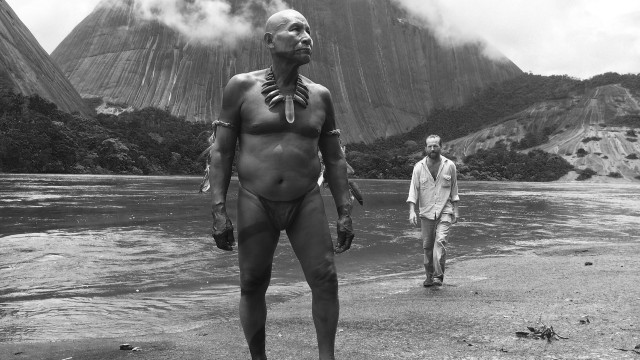
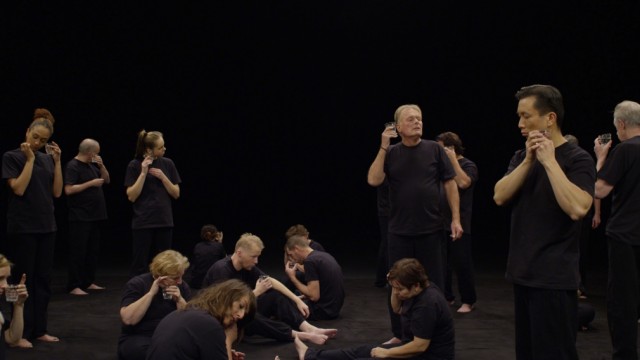
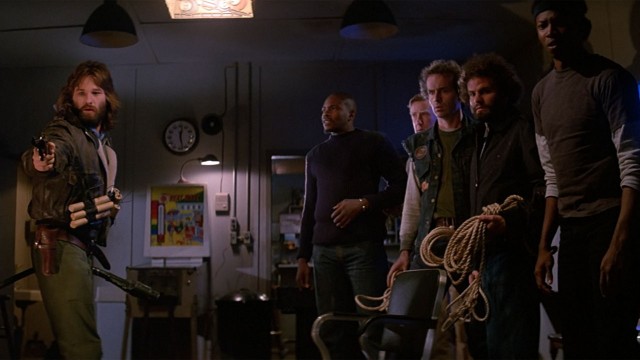
 “What were they doing flying that low, shooting at a dog, at us?” meteorologist Bennings (Peter Maloney) asks Dr. Copper (Richard Dysart) after watching a Norwegian helicopter pilot pursue a dog in the Antarctic, at the beginning of John Carpenter’s The Thing. “Stir crazy. Cabin fever. Who knows?” the doc answers, more than justifying Nitehawk Cinema’s inclusion of the cult film in its February Midnite series Cabin Fever. Carpenter’s 1982 remake of Christian Nyby’s 1951 Cold War sci-fi classic, The Thing from Another World, adds touches of Invasion of the Body Snatchers and Alien, with Kurt Russell leading an all-star cast of familiar character actors set up like a Vietnam War platoon. Russell is the cowboy-hat-wearing R. J. MacReady, part of a group of men at U.S. National Science Institute Station 4 in the frozen Antarctic. The crew also includes soft-spoken biologist Dr. Blair (Wilford Brimley), pot-smoking hippie assistant mechanic Palmer (David Clennon), nice guy geophysicist Vance Norris (Charles Hallahan), dedicated dog handler Clark (Richard Masur), funkster cook Nauls (T. K. Carter), assistant biologist Fuchs (Joel Polis), excitable communications officer Windows (Thomas G. Waites), serious station commander M. T. Garry (Donald Moffat), and skeptical chief mechanic Childs (Keith David). Soon some kind of monster from outer space is on the loose, able to disguise itself as other living creatures, making everyone suspicious of one another, the paranoia growing along with the terror and violence.
“What were they doing flying that low, shooting at a dog, at us?” meteorologist Bennings (Peter Maloney) asks Dr. Copper (Richard Dysart) after watching a Norwegian helicopter pilot pursue a dog in the Antarctic, at the beginning of John Carpenter’s The Thing. “Stir crazy. Cabin fever. Who knows?” the doc answers, more than justifying Nitehawk Cinema’s inclusion of the cult film in its February Midnite series Cabin Fever. Carpenter’s 1982 remake of Christian Nyby’s 1951 Cold War sci-fi classic, The Thing from Another World, adds touches of Invasion of the Body Snatchers and Alien, with Kurt Russell leading an all-star cast of familiar character actors set up like a Vietnam War platoon. Russell is the cowboy-hat-wearing R. J. MacReady, part of a group of men at U.S. National Science Institute Station 4 in the frozen Antarctic. The crew also includes soft-spoken biologist Dr. Blair (Wilford Brimley), pot-smoking hippie assistant mechanic Palmer (David Clennon), nice guy geophysicist Vance Norris (Charles Hallahan), dedicated dog handler Clark (Richard Masur), funkster cook Nauls (T. K. Carter), assistant biologist Fuchs (Joel Polis), excitable communications officer Windows (Thomas G. Waites), serious station commander M. T. Garry (Donald Moffat), and skeptical chief mechanic Childs (Keith David). Soon some kind of monster from outer space is on the loose, able to disguise itself as other living creatures, making everyone suspicious of one another, the paranoia growing along with the terror and violence.